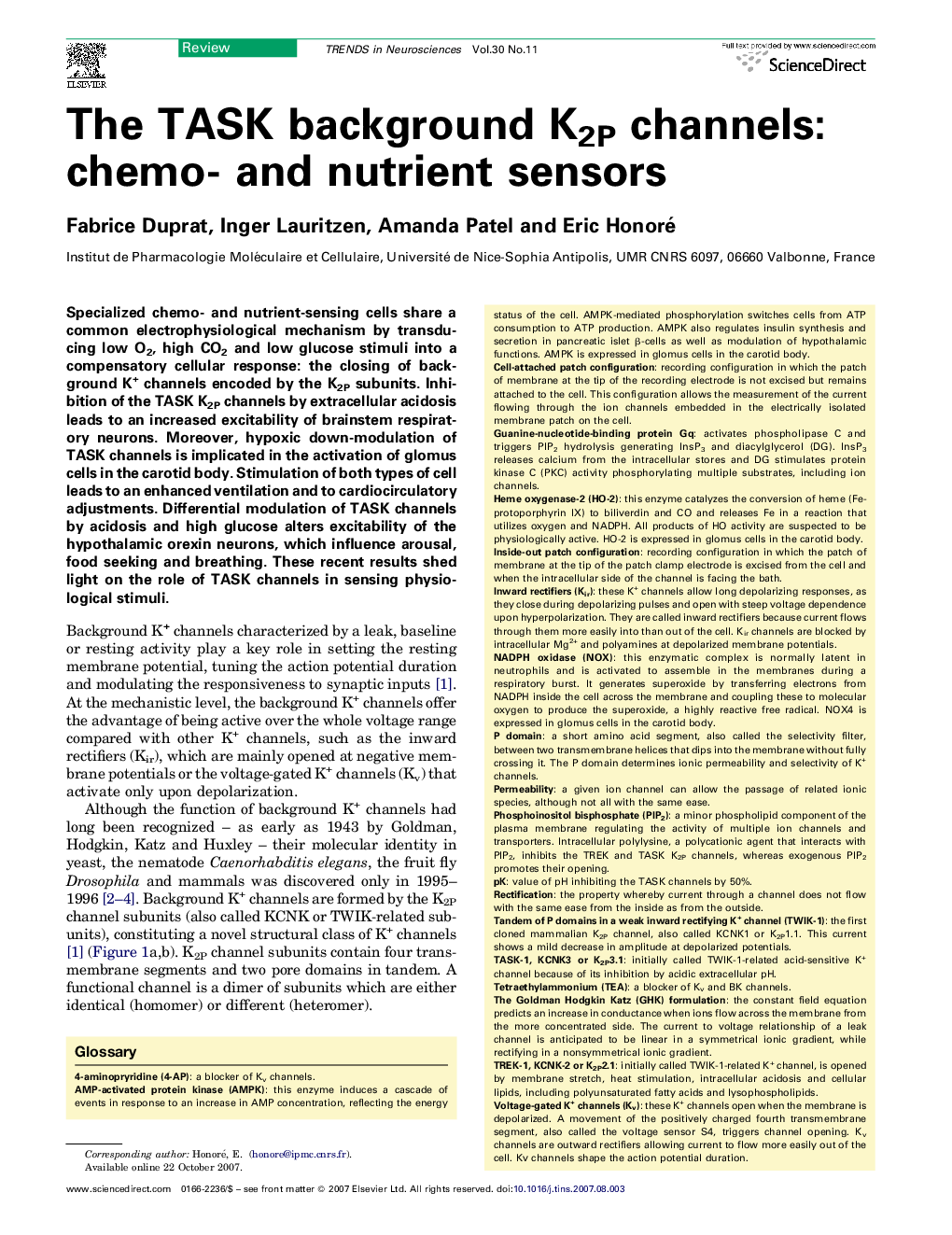| Article ID | Journal | Published Year | Pages | File Type |
|---|---|---|---|---|
| 4354761 | Trends in Neurosciences | 2007 | 8 Pages |
Specialized chemo- and nutrient-sensing cells share a common electrophysiological mechanism by transducing low O2, high CO2 and low glucose stimuli into a compensatory cellular response: the closing of background K+ channels encoded by the K2P subunits. Inhibition of the TASK K2P channels by extracellular acidosis leads to an increased excitability of brainstem respiratory neurons. Moreover, hypoxic down-modulation of TASK channels is implicated in the activation of glomus cells in the carotid body. Stimulation of both types of cell leads to an enhanced ventilation and to cardiocirculatory adjustments. Differential modulation of TASK channels by acidosis and high glucose alters excitability of the hypothalamic orexin neurons, which influence arousal, food seeking and breathing. These recent results shed light on the role of TASK channels in sensing physiological stimuli.
